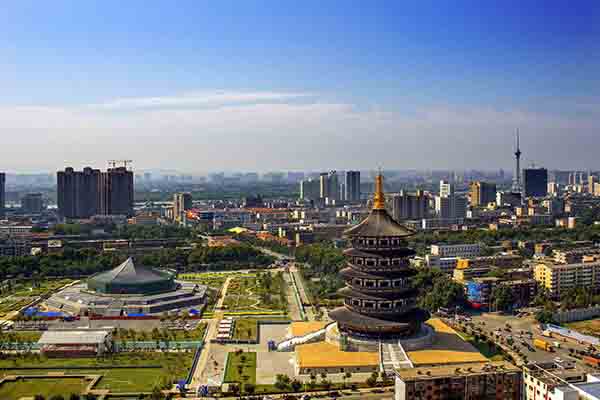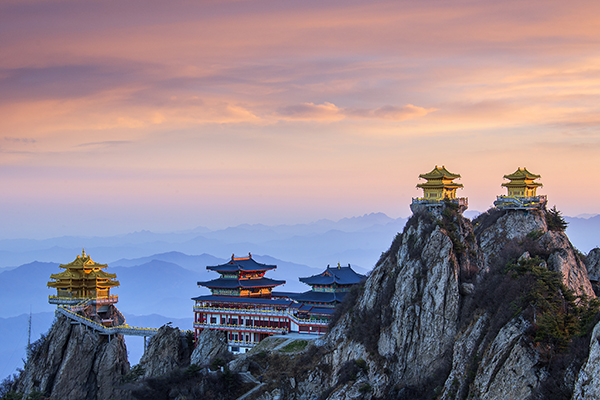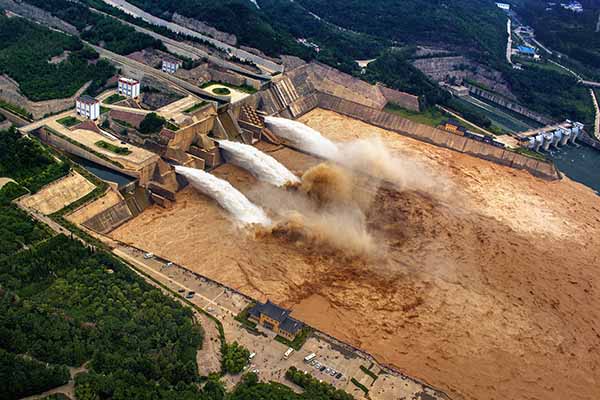
New parks have been built on the remains of Sui (AD 581-618) and Tang (AD 618-907) dynasties.[Photo/Provided to China Daily]
Luoyang builds development plans around its position at start of Silk Road
During the Han Dynasty (206 BC-AD 220), merchants, politicians and other urban dwellers set out from Luoyang in Henan province in Central China to carry out cultural exchanges and trade.
The routes along which their travels took them, spreading across regions of the Asian continent connecting the East and West, became the Silk Road.
Drawing on its rich cultural heritage, Luoyang is now restructuring its economy by protecting its rich historical resources and developing culture-related industries.
Historical resources
During the Silk Road and Creative Cities exhibition that was co-produced by China and UNESCO in Paris, France, this September, visitors were charmed by antiques and relics from the Silk Road that were showcased by Luoyang.
As one of the four ancient cities in China, Luoyang is home to six World Cultural Heritage sites. They include two historical sites relating to the Grand Canal, the country’s longest canal running from Beijing to Hangzhou.
The others are three newly-listed Silk Road sites and the Longmen Grottoes. Among the total of 22 Silk Road sites that applied for World Cultural Heritage, four are in Henan province, of which three in Luoyang.
In history, the city was the capital of the Han and Tang Dynasties, which is why it was the starting point of the Silk Road.
The three listed Silk Road sites in Luoyang represent different periods with specific historical value.

Taoist temples on the top of the Laojun Mountains.[Photo/Provided to China Daily]
To protect and develop
“The Silk Road carries the memory of the past and is the mark of an age of exchange and integration,” said Li Liushen, the city mayor. “To better protect the historical sites will also trigger more cooperation between regions along the Silk Road.”
Since 2006, the city started a massive project for protecting major heritage sites and building parks around its historical remains.
Various levels of government in Luoyang invested 150 million yuan ($24.2 million) in improving and managing the surrounding environment of its three Silk Road historical sites.
The city has also put greater stress on the development of cultural industries.
On one of the Silk Road remains, there will be museums and a country park in the future.
The Dingdingmen National Remains Park is the city’s showcase project for combining heritage protection and development. The park features local plants in its landscaping, and incorporates some ancient sites.
Around the Hangu Fort dating from the Han Dynasty, there will be a cultural industry area featuring a theater, a history-themed park and other facilities.
In addition, there will be cooperation with cities along the Silk Road to hold cultural festivals and develop specific travel routes for Silk Road related themes.

The Xiaolangdi Dam is a major tourist attraction while also acting as a water control system.[Photo/Provided to China Daily]
New opportunities
The original meaning of the Silk Road was about opening up and exchanges. The central government started to call for developing a Silk Road economic cooperation area in 2013.
Luoyang has now set its sights firmly on opportunities from the cooperation and is restructuring its industries to embrace future development.
Last year the city government rolled out the plan to develop Luoyang into a hub city of the province in terms of economy, culture and innovation.
The city has combined traditional industry upgrading with the development of emerging industries. A detailed plan that outlines each industry’s competitiveness and potential has been released to guide development.
There are 17 industrial clusters with a clear market position and sharp competitive edge in the city, the most among the whole province.
In addition, the city is also relocating and upgrading its State-owned companies.
It has unveiled new policy measures to support cooperative projects between industries and academic institutions to fuel its high-tech development.
It is also upgrading its transportation system and improving customer services as part of its development.

The Vairocana Buddha statue at Longmen Grottoes represents the best local Buddhist art.[Photo/Provided to China Daily]
